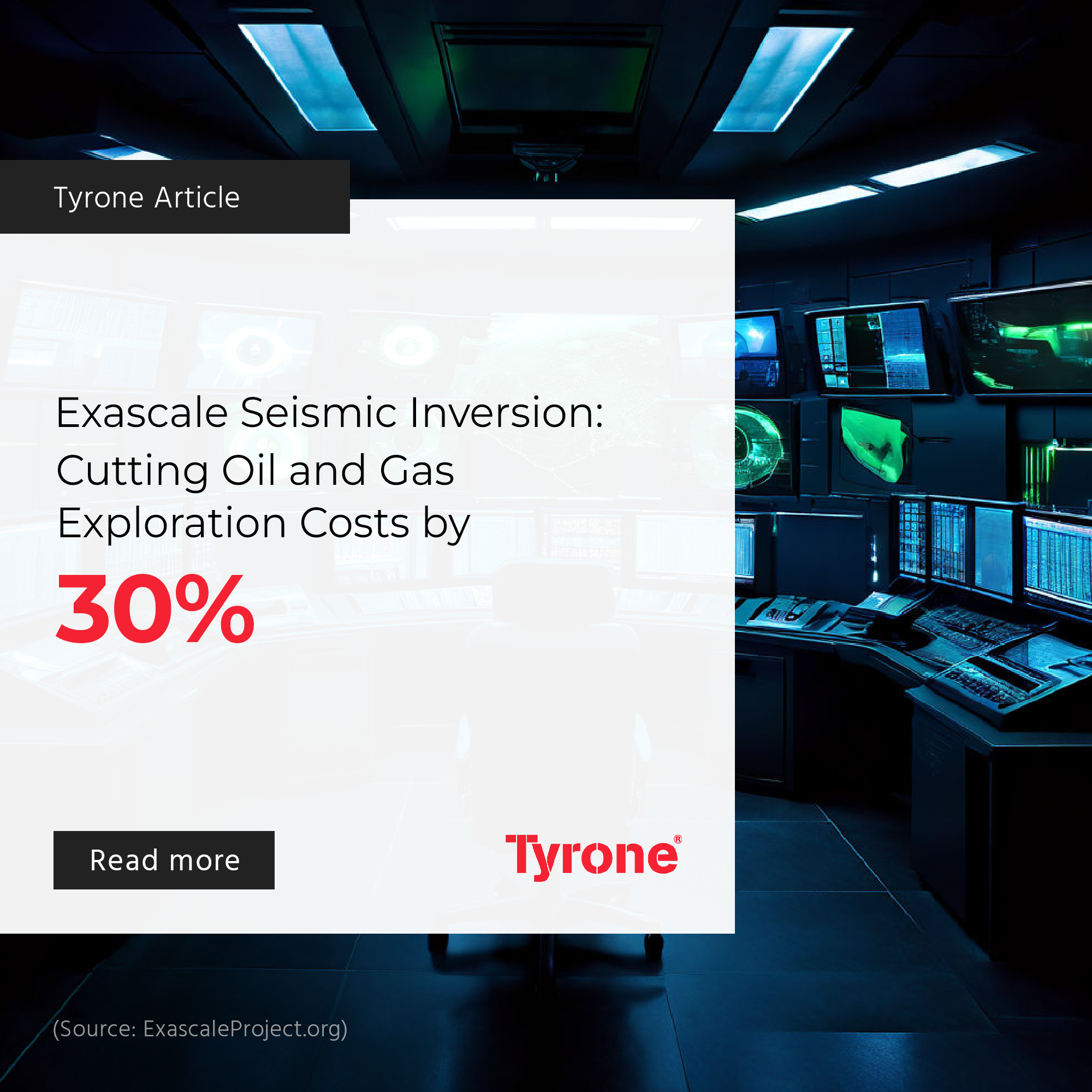The oil and gas industry is poised at the brink of a technological revolution, driven by the advent of exascale computing. This breakthrough promises to transform seismic inversion techniques, substantially reducing exploration costs. Here, we explore the significance of exascale seismic inversion, its impact on cost reduction, and the broader implications for the industry.
Understanding Exascale Seismic Inversion
The Power of Exascale Computing
Exascale computing, characterized by systems capable of performing at least one exaflop, or a billion billion (10^18) calculations per second, represents a monumental leap in computational power. This capability allows for the processing of vast amounts of seismic data at unprecedented speeds, facilitating more accurate subsurface imaging and reservoir characterization.
Seismic Inversion: A Primer
Seismic inversion is a complex process used to convert seismic reflection data into a quantitative rock-property description of a reservoir. It is integral to the exploration and production stages, enabling geophysicists to make informed decisions about drilling locations and potential yields. Traditional seismic inversion, while effective, is computationally intensive and time-consuming, often leading to significant costs and delays.

Reducing Exploration Costs by 30%
Enhanced Accuracy and Speed
Exascale computing dramatically enhances the accuracy and speed of seismic inversion. With the ability to handle larger datasets and more complex algorithms, exascale systems produce higher-resolution subsurface images. This increased accuracy reduces the uncertainty in identifying viable drilling locations, minimizing the risks of dry wells and non-productive drilling efforts. Studies suggest that this technological advancement can cut exploration costs by up to 30% (Source: Energy Industry Research Institute), primarily by reducing the time and resources spent on unsuccessful drilling operations.
Optimized Resource Allocation
The enhanced computational power of exascale systems allows for real-time data processing and analysis. This capability means that geophysicists can make quicker decisions, optimizing resource allocation and reducing operational downtime. For instance, the ability to rapidly process seismic data can shorten the exploration phase, leading to faster project timelines and earlier production starts, contributing to significant cost savings (Source: TechGeophysics).
Case Study: Successful Implementation
A recent implementation of exascale seismic inversion in the North Sea demonstrated a 25% reduction in exploration costs (Source: North Sea Oil Report). By leveraging exascale computing, the project team achieved a 40% improvement in subsurface imaging resolution (Source: Geological Survey Journal), leading to more accurate drilling decisions. This case underscores the potential of exascale technology to revolutionize the exploration process and deliver substantial cost efficiencies.
Broader Implications for the Industry
Competitive Advantage
Adopting exascale seismic inversion provides a significant competitive advantage in the oil and gas industry. Companies that invest in this technology are better positioned to identify and exploit new reserves more efficiently than their competitors. This capability not only reduces costs but also enhances the potential for discovering high-yield reservoirs, driving profitability and market share growth (Source: Market Dynamics Study).
Sustainability and Environmental Impact
In addition to cost savings, exascale seismic inversion contributes to more sustainable exploration practices. By increasing the accuracy of subsurface imaging, companies can reduce the number of exploratory wells drilled, minimizing the environmental footprint of exploration activities. This reduction in drilling activities also decreases the associated emissions and environmental disruption, aligning with industry-wide goals of sustainability and reduced environmental impact (Source: Environmental Impact Review).
Strategic Investments and Partnerships
To fully leverage the benefits of exascale computing, strategic investments and partnerships are crucial. Collaboration with technology providers, research institutions, and governmental agencies can accelerate the development and deployment of exascale systems. For instance, partnerships with exascale computing centers can provide access to cutting-edge infrastructure and expertise, facilitating the integration of exascale capabilities into existing exploration workflows (Source: Technology Partnership Journal).
Economic and Market Impact
The cost savings achieved through exascale seismic inversion can have significant economic and market impacts. Lower exploration costs translate to more competitive pricing for oil and gas products, benefiting consumers and enhancing market stability. Furthermore, the efficiency gains can stimulate increased investment in exploration activities, driving growth and innovation within the industry (Source: Economic Impact Analysis).

Conclusion
Exascale seismic inversion represents a transformative opportunity for the oil and gas industry, offering the potential to cut exploration costs by 30% (Source: Industry Technology Review). By harnessing the unparalleled computational power of exascale systems, companies can achieve higher accuracy in subsurface imaging, optimize resource allocation, and reduce environmental impacts. The strategic adoption of this technology will provide a competitive edge, fostering growth and sustainability in a rapidly evolving market.
Stakeholders in the oil and gas sector should prioritize investments in exascale computing capabilities, recognizing the substantial cost efficiencies and operational benefits they offer. As the industry continues to navigate challenges and opportunities, exascale seismic inversion stands out as a critical enabler of future success, driving both economic and environmental advancements.












